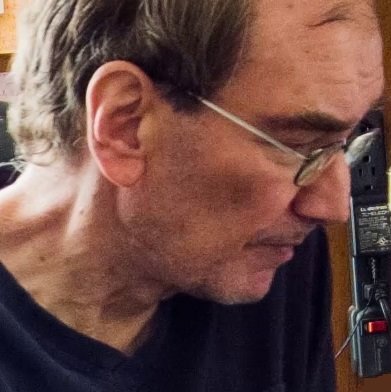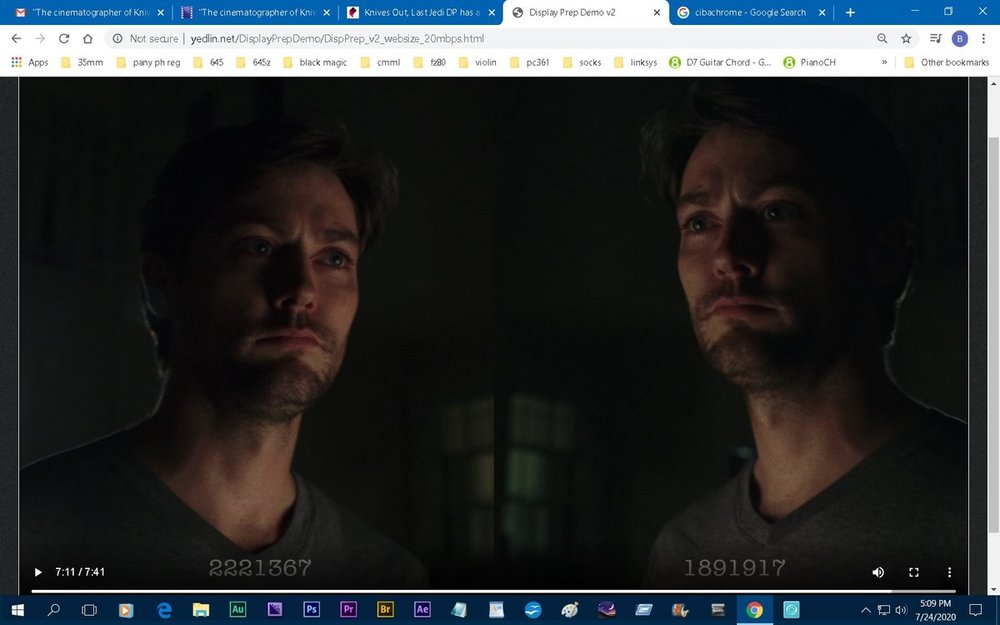
Bob Speziale
Basic Member-
Posts
186 -
Joined
-
Last visited
Profile Information
-
Occupation
Other
-
Location
N.J., USA
-
My Gear
Nikon D3100, Lumix LX5, Nikon D7000, Nikon 1 J1, Nikon Coolpix B700 4K, Lumix FZ 80 4K.
-
Specialties
Retired Unix sys admin and dba. Amateur musician, photographer, videographer, audio and video editor. http://www.youtube.com/user/bobspez/videos
Recent Profile Visitors
8,509 profile views
-
Mechanics of digital video capture.
Bob Speziale replied to Bob Speziale's topic in General Discussion
Thanks. -
Mechanics of digital video capture.
Bob Speziale replied to Bob Speziale's topic in General Discussion
Thank you David. So the magic words for google and youtube are pixel binning for video and line skipping for video. Much appreciated. The article and video answer my questions. Your original answer and some of the answers in the thread were above my knowledge of the terms to sink in. But I have it now. -
Mechanics of digital video capture.
Bob Speziale replied to Bob Speziale's topic in General Discussion
Problem with google is it will bring up a million hits related to dslr video specs, nothing on how the video actually records, other than mentioning the crop factor (eg. full frame video on some models, or the video crop factor). That is, they will describe the output, all aimed at potential buyers and users, but nothing on how the output gets produced. This post is the only time I have ever seen the actual mechanics of creating a 2MP video frame discussed anywhere. Maybe it's some sort of trade secret. -
Mechanics of digital video capture.
Bob Speziale replied to Bob Speziale's topic in General Discussion
Thank you David. Are there any published articles or video on the process? I was surprised that this was one subject where Google failed me completely. -
Mechanics of digital video capture.
Bob Speziale replied to Bob Speziale's topic in General Discussion
My original question was what is that algorithm? DSLRs have been creating HD video streams for about a decade but I haven't seen any articles on how they do it. Do they just use 2MP of the sensor and tuen off the others, or do they use 2MP of the sensor and rotate to another 2MP for the next frame, or do they use the whole sensor and downsize the image to 2MP? -
Mechanics of digital video capture.
Bob Speziale replied to Bob Speziale's topic in General Discussion
The BMPCC shoots 12 bit raw dng files which contain about 10x the data that downsized dslr video frames do. To me it just looks better. Here's a single frame from a video I shot at iso-1600 in daylight coming through blinds at f3.5. Here's a single frame (downsized to post here) and a crop of that frame. Colors and skin tones just look better to me. I was thinking this over last night and realized dslr's usually offer a choice of image size, high, medium and low quality images that will reduce the file size, eg. for emailing. It seems likely that this may be the same process used to ceate the 2MP digital video frames, whatever that process is. -
Mechanics of digital video capture.
Bob Speziale replied to Bob Speziale's topic in General Discussion
I was just curious because I couldn't find any easy answers anywhere. I know my 50MP 645Z and my 2MP BMPCC both shoot 1080P video. The BMPCC image seems the best. -
Mechanics of digital video capture.
Bob Speziale replied to Bob Speziale's topic in General Discussion
So it's just the 2MP in the center of the sensor that is used, with all the other pixels turned off? But isn't the lens projecting the image over the whole sensor (or most of it if the video is cropped a bit to 16x9)? But if most of the sensor is used, is the image downsized by the camera to 2MP before the frame is captured? -
For those of you with technical knowledge, maybe you can answer this question. How does a DSLR with a 16 or 20 or 50MP sensor capture 2MP digital video frames? Are most of the pixels turned off? Are the 2MP images captured by the same pixels on every frame, or after each frame is captured are another 2MP on the sensor used? Or is the whole sensor used used and the frames then downsized? Or something else? On my BMPCC original camera, it has a 2MP sensor, so the same pixels get used for every frame. But how about on a 16MP , 21Mp or even 50MP DSLR?
-
Looking at Yedlin's demo I did see a difference. The left side seemed just a little more saturated and colorful to me than the right, especially in the skin tones. At the end of the demo it said the left side was the 35mm film. This isn't a surprise. Having shot digital and film still pics, I've found no way to 100% match colors of the two, even taken side by side at the same time. They are different, but only noticeable if viewed side by side. Otherwise, once the mind is drawn into the content, it's not noticeable. Back in 1964, most of us got to love the Beatles listening to them on transistor radios with one inch speakers. Art is experienced more in the mind than in the eyes or the ears.
-
The grade looks OK to me. The noise is likely from the low light.
-
Thank you for the info.
-
Very well done. Looks professional. Just curious, what cameras and lenses are you using? Great cinematography.
-
How can I get the highest quality capture of MiniDV?
Bob Speziale replied to Jake Wolfert's topic in SD
I used my video editing software to capture and record footage from my mini dv Sony camera to my fire wire equipped laptop. The output was a AVI file at 720x480 resolution. Data rate was 29,000 mbps.










